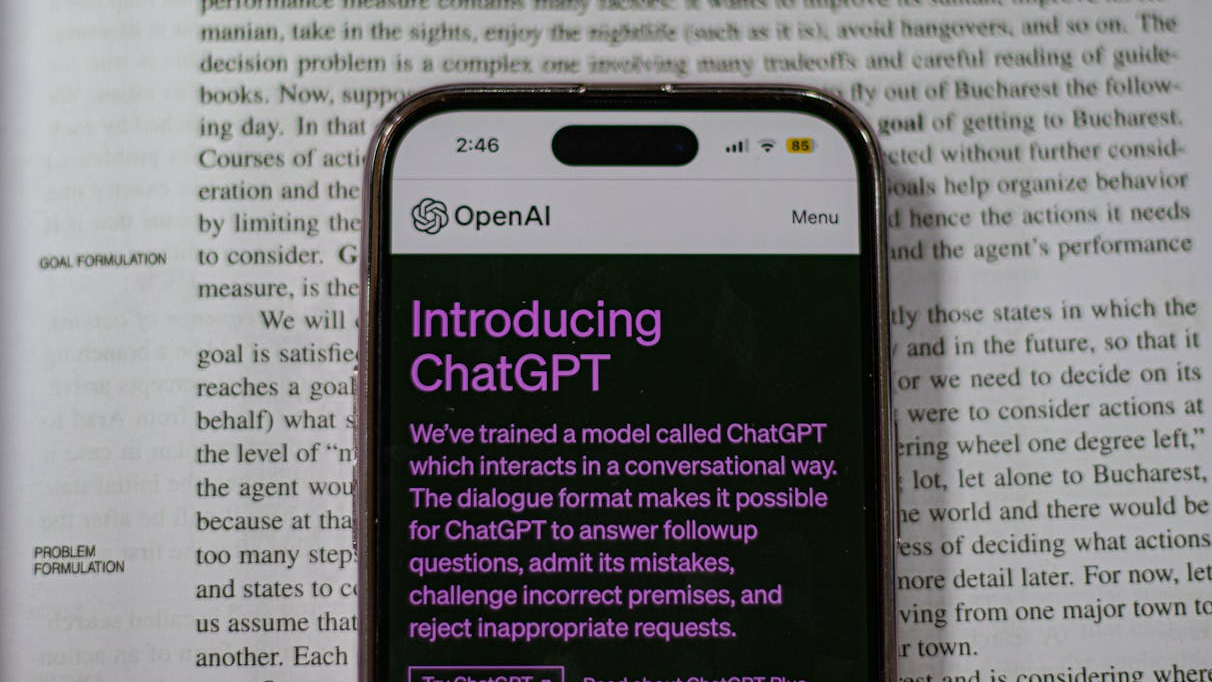With internet search engines, learners now find that looking up for information a breeze.

Generative AI such as ChatGPT are widely used by learners to generate plausible text based on prompts
Whether it is using the ubiquitous Google search engine or the newest artificial intelligence search tools such as ChatGPT or Google Gemini, these tools are extremely fast and efficient in generating plausible texts based on a short instruction or prompt. And hola, the information you are seeking is right at your fingertips!
The Challenge of AI in Learning
The innovative technology allows you not only to access and summarize information from its ‘bank’, but also to re-write and present that information based on your preferences, creating what is commonly referred to as a ‘model answer’ to your question.
Although the information provided may not be the most accurate and could be quite generic, most learners at present are comfortable using digital tools and continually experimenting with AI (Artificial Intelligence) tools to assist them in their quest for knowledge and to gain better academic results.
This raises the issue of evaluating the authenticity of learning, especially when it pertains to grading assessments. The monitoring of take-home assessments, such as projects, assignments, and online assessments, is difficult because students can use artificial intelligence to help them achieve higher grades.
Take for example the use of technologies within the writing process of an academic essay.
Articulating or generating ideas could be done in the learner’s mother tongue and translation tools employed (Google Translate, DeepL, Youdao etc,). Then rewriting tools such as Wordtune and Quillbot can be used to give alternate writing structure and style.
To revise and edit, grammar checkers such as Grammarly are used and for referencing, Zotero or Mendeley can assist in managing, storing, and citing bibliographic references.
Teacher education needs to think and re-think to better support students in evaluating assessments by allowing them to use digital tools in an effective and ethical way, laying clear guidelines on what is permissible and what is not.
This is indeed not an easy feat but a challenging one because the teacher will have to use AI to demonstrate its value as a learning tool. The learning process should be emphasised as much as arriving at the answer.
Furthermore, clear guidelines could be drawn on what AI tools to use and at what stage of the learning process, so students can legitimately use the AI tools as a means of helping them in their learning quest.
AI Enhances, Not Replaces, Critical Thinking
What educators do not want is for the learners to use AI tools merely to generate answers and to ‘copy the answers’ 100% without any thinking or learning process involved. This defeats the purpose of using the tools in the first place and relegating the tools to just be the ‘answer provider’. Learners should regard AI tools as a means of learning and not an end in themselves.
It is also important for the teachers to inculcate the value of academic integrity, and to understand what constitutes plagiarism and intellectual property. Learners should not simply ‘copy and paste’ information from any articles they read on the internet without citing sources because that would be considered plagiarism.
Proper citation adhering to a referencing convention and giving credit back to its original authors for their ideas, evidence, or reasonings is important because it could boost the credibility of the learners’ writing besides demonstrating academic integrity.
With an infinite supply of information available, it is even more crucial for teachers to train learners to be critical readers and thinkers. The ability and skill to discern and critically evaluate a piece of information or article is a valuable skill for learners.
Discernment in a Sea of Sources
One of the many ways to raise student awareness of the many reading texts or information available on the internet is to teach them discerning skills. What constitutes a credible, valid, and relevant article has some discerning features to them. When reading a particular text, a critical reader should evaluate the content of the article, the style, structure, and language of the writing.
Teachers can demonstrate the ways to understand the main idea or argument of a text by highlighting the ‘clues’ of the main message. These can be from the supporting details in the content or repetition of keywords or connectors as well as analysing the structure, style, and writing tone of the author.
The ability to distinguish fact from opinion, differentiate types of evidence, identify the author’s purpose, evaluate the tone of the author, and identify bias in any article should be included in any reading activities.
Critical readers can question the background of the author, highlight the logical connection between claims and evidence and draw references to their cultural background to understand complex issues and articulate their ideas.
In this era of information explosion, being a critical reader and thinker is essential for navigating the complexities of the modern world. One might achieve this by making informed decisions and responsibly engaging in society.
The opinions expressed in this article are the author’s own and do not reflect the view of Swinburne University of Technology Sarawak Campus. Cassandra Eva Lau currently teaches Language units in Foundation Studies and is contactable at celau@swinburne.edu.my

